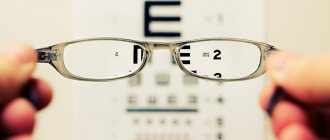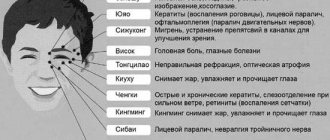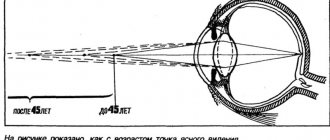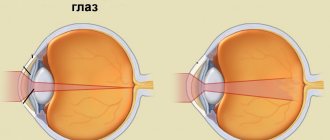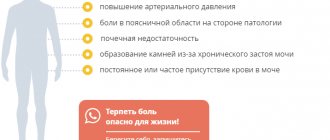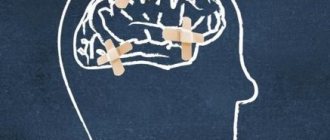The kidneys are organs with little mobility, and with a deep breath and other loads they can fit a little, but in a normal state they always return to their usual place. For a number of reasons, atrophy of the retaining elements of organs is possible, causing them to drop by more than 2 cm. This disease is called nephroptosis. In some cases, exercises that can help with kidney prolapse can return the organ to its normal physiological position.
Objectives and principles of exercise therapy
Nephroptosis is a progressive disease, therefore clinically there are three stages. Each of them manifests itself differently, so the tasks of exercise therapy also differ.
Table: tasks of exercise therapy depending on the stage of nephroptosis
| Stages | Kidney displacement level | Symptoms | Objectives of exercise therapy |
| Stage I | The kidney moves 0.5–1.5 vertebrae down. On inspiration, the lower renal segment is palpated, returning to the lower rib when exhaling | None. Sometimes there is moderate pain in the lumbar region |
|
| Stage II | Drop of 2–2.5 vertebrae. In an upright position of the body, the kidney mainly extends beyond the ribs, and when a person lies down, it returns to its place on its own, or is painlessly set by hand into the anatomical bed | Severe lumbar pain, relieved when the kidney is returned to its place | |
| Stage III | Displacement of three vertebrae or lower. In some cases, the organ descends into the pelvis | Constant pain in the lower back. The functioning of the kidney is impaired, which is manifested by dysuria (urination disorder), increased blood pressure, edema in the morning | Exercise therapy is prescribed after surgery to eliminate nephroptosis and sets the following tasks for the practitioner:
|
Depending on the stage of nephroptosis, the kidney moves down a certain distance, which is noticeable in relation to nearby anatomical structures
Physical training of a patient with nephroptosis is based on the following principles:
- Regularity. Exercise therapy is effective with an integrated and systematic approach. Trainings are carried out 1-2 times a day. If exercise therapy is performed once a day, its duration is 30–50 minutes. When working out twice, devote up to half an hour to training.
- Correct sequence. The lesson consists of three parts - introductory (warm-up), main (intensive exercises) and final.
- Gradual increase in load. The initial complex, regardless of the stage of nephroptosis, consists of 10–12 special elements, each of which is repeated 2–4 times, alternating with relaxation exercises. The load is gradually increased by introducing additional exercises and increasing the number of repetitions to 10–12 times. As the physical endurance of the student increases, the density of the training increases due to the reduction in the number of relaxation exercises.
When exercise therapy brings a lasting improvement in your condition, as confirmed by instrumental and clinical studies, you cannot refuse classes. Make them a part of your life, since long-term lack of exercise leads to weakening muscle tone. This is especially true for people over 35–40 years of age, in whom age-related changes provoke a decrease in muscle tone and tendon elasticity.
Basic principles of proper physical therapy
Nephroptosis occurs more often in females than in males due to differences in the physiological characteristics of the body. In women, the abdominal muscles are less developed, the connective tissue is more elastic and the fatty capsule of the kidney is smaller.
Exercise therapy for nephroptosis is considered the main component of effective treatment of the disease, but only if surgical treatment is not indicated.
Since today there are many options for exercises - depending on the degree of illness, physical fitness, location of the kidney or concomitant diseases - a specialist selects an individual complex for each patient.
The main goal of physical therapy for nephroptosis is to strengthen the abs, back, sides and return the organ to its anatomically correct position.
Basic rules to follow during classes:
- Do exercises regularly, every day, without skipping.
- One lesson should last 20–30 minutes.
- At any stage of nephroptosis, you should not make sudden movements, run, jump, or lift weights.
- Clothing should be natural, not restricting movement, and you should also prepare a comfortable rug.
- You need to exercise on an empty stomach in the morning. The room should be well ventilated. If the weather permits, classes can be held outside, but always on a flat and hard surface.
- If exercise is accompanied by dizziness or other unpleasant sensations, you should stop and consult a doctor for advice.
- You cannot immediately give a large load, it must be increased gradually.
Experts recommend starting a set of exercises with a warm-up, which will warm up the muscles and prepare the body for further exercise. In addition, heating also has a healing effect.
Types and features of exercises for kidney prolapse
For nephroptosis, special and general developmental physical exercises are used.
For nephroptosis, only certain types of physical exercise can be used
Special exercises act directly on the cause - a weakened tendon-muscular system in the area of the prolapsed kidney. These include:
- Dynamic breathing exercises help strengthen skeletal muscles and help normalize metabolic processes in a diseased organ. Breathing of varying intensity and depth is combined with movement.
- Static - consist of targeted tension and relaxation of the torso muscles. Fix in different positions, strain certain muscle groups. Don't forget about proper breathing.
- People who have developed nephroptosis due to sudden weight loss must include static breathing exercises without unnecessary movements (diaphragmatic and thoracic breathing) in their exercises.
Diaphragmatic (abdominal) breathing is a technique that requires concentration and daily practice. It uses a powerful muscle - the diaphragm, which separates the chest and abdominal cavities. This type of breathing is useful for enriching the blood with oxygen and preventing respiratory diseases.
Lie on your back, close your eyes and do the following:
- Inhale slowly so that your belly rounds as your lungs fill with air.
- Exhale even more slowly, drawing in the anterior abdominal wall.
- Relax.
On inhalation, the diaphragm contracts, on exhalation, it relaxes.
Chest breathing is divided into clavicular (upper) and costal (lower). The first is typical for older people. It is carried out due to the movement of the collarbones up and down and uses the lungs by 20%.
During training, develop lower breathing. It involves the active activity of all intercostal muscles. If chest breathing is present in a complex of therapeutic exercises, we are talking about the lower type. The technique is as follows:
- Inhale through your mouth and nose at the same time so that your stomach is drawn in as you inhale. At the same time, the ribs rise and round.
- Exhale through your nose so that the abdominal muscles gradually relax and the chest drops.
- Pause for 3-5 seconds before your next inhalation.
You can control the type of breathing by placing one palm on your stomach and the other on your chest.
General strengthening exercises are used to warm up at the beginning of each lesson and during training. These include:
- Preparatory elements are simple movements of various parts of the body. Used to warm up all muscle groups and prevent injuries.
- Exercises to correct posture - prevention of spinal deformities and osteochondrosis. These diseases aggravate the course of nephroptosis.
- Coordination exercises will be performed to train the vestibular system.
Do all exercises for nephroptosis in such a way that the body is horizontal or at an angle of no more than 60° relative to the plane.
During classes, it is permissible to use the following sports equipment:
- rollers;
- inclined board Evminov;
- small ball;
- fitball;
- expander bands.
Rollers of various diameters are placed under the lower back during exercise. This creates an elevated position of the lower body. This is relevant when performing gymnastics for stage II nephroptosis.
It is convenient to perform abdominal exercises with a roller under the lumbar region of the back
On the Evminov board, the entire body is given an inclined position. Exercises are performed to strengthen the abdominal and back muscles.
Exercises on the Evminov board ensure the rapid return of the kidneys to their anatomical plane
Squeeze the small ball with your upper and lower limbs to create a static load.
Exercises with a small ball can diversify the exercise therapy complex
Exercises on a fitball develop coordination and flexibility, and allow you to work your abdominal and back muscles. At stage I of nephroptosis they are successfully used. The possibility of use at stage II is discussed with the doctor.
Exercises lying on a fitball not only strengthen muscles, but also develop coordination.
Expander bands are stretched with force with your hands or feet. The muscles of the limbs are strengthened, the abs are tensed.
Using expander bands, adjust the degree of load by changing the tension of the band
Preparation for class
With nephroptosis, both physical exercise and preparation for exercise are important. Before starting classes, follow these important recommendations:
- Wear loose clothing and athletic shoes.
- Ventilate the room before class.
- Persons with nephroptosis are prone to kidney inflammation, so you should not exercise on a bare, cold floor. Use a karimat or gymnastics mat.
The use of a karimat or gymnastic mat prevents body hypothermia during exercise on the floor, providing the necessary surface rigidity - Do exercises on an empty stomach or 2-3 hours after meals.
- Immediately before starting class, make sure your heart rate and blood pressure are normal.
- If you feel unwell (headache, dizziness, back discomfort), postpone the lesson until your condition returns to normal.
What to consider when performing such gymnastics
Exercises for nephroptosis are considered one of the safest types of physical education. However, you still need to carefully prepare for it. You should not do gymnastics immediately after eating - you can cause problems with the digestive system.
The benefits of gymnastics for kidney diseases are undeniable. However, the effect can be achieved only if you maintain regularity of actions. This means that you need to practice every day. On average, such a charge will take you about 25 minutes, so it’s possible to find time for it even in a busy schedule.
If during the exercises you experience strange sensations, for example, dizziness (when performing the same “Cat”) or darkening in your eyes, and also if you feel pain, you should stop. Be sure to see a doctor after this.
Photo from propochki.info
But a complex of physical therapy will be effective only when it is selected by a specialist, taking into account the degree of prolapse. In severe cases, physical activity will cause harm instead of benefit.
Charging according to Bubnovsky
Many believe that the technique of Sergei Mikhailovich Bubnovsky is used to treat diseases of the musculoskeletal system. But the professor also compiled sets of exercises that have a positive effect on internal organs. If they are performed correctly and regularly, at stages I–II of nephroptosis it is possible to return the kidney to its original position.
Sergey Bubnovsky is one of the founders of kinesiotherapy (movement therapy). He believes that muscle tissue is a structure in the body that is capable of self-healing and full functioning at any age. But for this, the muscles need to contract and relax correctly. Considering that the human body consists of 40% muscle fibers, their performance affects the functioning of most internal organs. The latter are continuously affected by the gravity of the Earth, especially when a person is in an upright position. Muscles and ligaments exert resistance, preventing the insides from descending. With age, tendons weaken and lose elasticity. Splanchnoptosis (prolapse of internal organs) occurs in people with weak muscles. Therefore, it is important to strengthen muscles by training while still young. Based on Bubnovsky's theory, it is never too late to start exercising yourself, but as you grow up and age, it takes more time to restore your physical form.
To practice using the Bubnovsky method, it is not necessary to visit a specialized clinic for nephroptosis. There will be no need for simulators, since weights are contraindicated.
The goal of kinesiotherapy for kidney prolapse is to activate the activity of the deep muscles of the trunk.
Bubnovsky exercises for nephroptosis are performed while lying on your back. Initially, the following special exercises are recommended (from i.p. - lying on your back, arms along the body):
- Press your straight legs together with force, slowly raise them as you inhale so that they are perpendicular to the floor, and lower them as you exhale. Repeat 8-10 times.
- Exercise "Bicycle". Raise your legs, bend your knees at a right angle. Simulate pedal rotations. Breathe rhythmically. Perform for 1–2 minutes.
- Bend your knees and alternately touch your chest with your thighs. The number of repetitions is 10–12.
- Exercise "Scissors". Raise your straight legs above the surface so that they form a 40° angle with the floor, spread them apart, and then swing, imitating the movement of scissors. Repeat 10–12 times.
- Squeeze the small ball forcefully in your knees, hold for 10 seconds, then relax. The number of repetitions is 6–8.
- With straight legs pressed together, bend left and right. Do 10–12 times.
Photo gallery: performing special exercises for nephroptosis according to the method of Professor Bubnovsky
Exercise 1 - raise, then lower straight legs
Exercise 2 - “Bicycle”
Exercise 3 - alternately touch your chest with your knees
Exercise 4 - “Scissors”
Exercise 5 - squeezing the ball with your knees
Exercise 6 - bending legs left and right
As the student develops endurance, increase the number of repetitions of the exercises, and also include more complex elements in the complex:
- Exercise "Plow" is performed from and. n. lying on your back. Raise your straight legs up and take them behind your head. Try to reach your toes with your hands. Breathe rhythmically.
- Pose “Birch” - stand on the shoulder blades. Raise your legs straight above your head. Place your arms along your body, resting them on the floor. Raise your lower back while simultaneously pushing your legs up. Transfer the center of gravity to the area of the shoulder blades and create support for the lower back with your hands. Pull your toes up. Try to keep your entire body perpendicular to the floor for as long as possible.
- "Bridge". Place your palms behind your shoulders. Bend your knees, placing your feet on the floor. Raise your torso, distributing its weight between all limbs, which must extend simultaneously. Bend over so that your stomach rises as high as possible and your body forms an arch.
Performing such elements uses most of the muscles of the torso and limbs. Considering the complexity of the positions, hold them for 5–15 seconds, increasing this time with each session.
Photo gallery: exercises using the Bubnovsky method to complicate the training process
The “Plow” exercise, in addition to strengthening muscles, develops flexibility
Exercise “Birch” improves coordination
Regular performance of the “Bridge” exercise develops the tendon system of the spine
At stage I of nephroptosis, after 2–4 months of exercise, in the absence of progression of the disease, movements from the knee-elbow and knee-wrist positions are added, for example, bending the back up and down, alternately pushing the legs back with straightening, etc. Such exercises are performed smoothly , no tension.
Back bends up and down from the knee-wrist position are shown at stage I of nephroptosis
Most of the exercises that Dr. Bubnovsky uses in his complexes were performed by us repeatedly, even in physical education lessons at school. Some of them have been known since ancient times, since they are analogues of yogic poses (asanas). For example, the “Birch” stance is a prototype of the Indian Sarvangasana. The “plow” in yogic language is called Halasana. Kinesiotherapist Bubnovsky considers such exercises only from the point of view of the physiological effect on muscles and internal organs. A deeper understanding of the principle of the impact of exercises on the human body and energy will help you get acquainted with yoga asanas, from which the elements of exercise familiar to us originated.
Treatment with gymnastics
There is special therapeutic gymnastics using the Bubnovsky method. The essence of the complex is the implementation of movement therapy and kinesitherapy. According to Bubnovsky’s method, when a renal organ prolapses, the following exercises must be performed:
- In the starting position, lying on your back, raise your lower limbs and press them to your body. Initially, the load should be minimal. Over time, we increase the number of exercises.
- You need to lie on your stomach. Extend your arms in front of you. The legs should be straight, the toes should be pressed. Raise your upper and lower limbs at the same time. Stay in this position for as long as possible. Repeat five to eight times, each time increasing the time of the pose.
- For the next action, the stomach is retracted. The patient lies with his stomach on the ceiling. With his legs it’s as if he’s pedaling a bicycle, but only while lying down. Repeat for two to three minutes.
- Lie down with your stomach down. Gather your hands in a lock at the back of your head. Bend your legs at the knees. Tilt them now to the right, now to the left. The action is repeated in each direction 8 times.
- We repeat this exercise in different directions while exhaling. Lying with your face toward the ceiling, bring your right knee toward your opposite elbow. After this, exhale and relax. Repeat the same in the opposite direction. Repeat the action until fatigue.
To better understand how the exercises are performed, you can watch “Exercise therapy for kidney prolapse in pictures.”
Exercises for bilateral nephroptosis
With simultaneous prolapse of the kidneys on both sides, therapeutic exercises are effective in the first stage of the disease. At the second stage, the patient feels severe pain in the kidney area, similar to renal colic. Nausea, vomiting, pale skin, and cold sticky sweat are common. Dysfunction of the pyelocaliceal structures of the kidneys is rapidly developing. The outflow of urine is disrupted, which provokes an increase in blood pressure, swelling of the hands and face.
It is better to perform therapeutic exercises in the morning without getting out of bed. The complex includes 4–8 simple exercises from a supine position. Special elements alternate with respiratory ones. Avoid sudden movements, but perform each action with muscle tension. Lesson duration: 15–30 minutes.
An example of a simple complex of therapeutic exercises for bilateral kidney prolapse for beginners:
- I. p. - lying on your back, arms along the body, legs together. Diaphragmatic breathing - 30 seconds.
- From the same position, raise your legs closed together so that they form an angle of 45° with the surface. Hold for 3-5 seconds, then lower your limbs. Repeat 4-6 times.
- Chest breathing - 30 seconds.
- Alternately raising straight legs by 90 degrees.
- Voluntary breathing - 30 seconds.
- While remaining in a lying position, place a cushion under your back. As you inhale, bend your right leg, and as you exhale, straighten it. Then repeat with your left leg. Do 10–15 repetitions.
- Diaphragmatic breathing - 30 seconds.
- I. p. - lying on your back, arms along the body, legs together raised at an angle of 90° relative to the plane. Spread your straight legs wide, and then return to i. P.
- Chest breathing - 30 seconds.
If the patient is recommended to wear a special corset or bandage, it is removed during the exercise and put back on when finished. This is due to the fact that when fixed with a corset, adequate work of one’s own muscles does not occur, since they do not contract with full amplitude. Exercises performed in the morning in a lying position return the kidneys to the topographic boundaries, after which the corset fixes them in this position for the whole day.
The corset (bandage) is worn so that it firmly fixes the kidney area. If you cannot achieve sufficient tension on your own, ask for help.
A kidney band or corset is put on in a lying position immediately after exercise therapy with the abdomen retracted as much as possible, independently or with outside help.
Important Patient Information
Despite the fact that physical therapy for kidney diseases is considered gentle and is usually well tolerated by patients, there are nuances that are important to know:
- Do not perform exercises on a full stomach: this can cause gastrointestinal problems.
- If during the exercises you feel discomfort, nagging pain in the lower back, or feel dizzy, stop immediately. In the future, be sure to consult your doctor.
- In consultation with your nephrologist, after training, wear a bandage belt that will help fix the urinary organs in the correct position.
- Diaphragmatic breathing also helps train the abdominal muscles. It is carried out by inflating the abdomen during inhalation and retracting it during exhalation. This breathing can be used before, during and after training.
Exercise therapy for kidney prolapse is effective not only for eliminating unpleasant symptoms of the disease, but also for preventing serious complications. A strong muscular frame is able to hold the kidney in a physiological position and prevent its further prolapse.
In addition to physical therapy, complex therapy for nephroptosis should include the prevention of urinary tract infections, adherence to the principles of a healthy lifestyle and a diet with a predominant consumption of dairy and plant foods. With careful attention to your health, the prognosis for patients with kidney prolapse remains favorable.
Exercises for kidney prolapse help to cope with the problem quickly enough. After all, this pathology is quite serious and can lead to complications. Prolapse of the kidney, or nephroptosis, is accompanied by the movement of an important organ of the human body from its usual place to the pelvic area. Most often, such problems are observed in women, although such patients can also be found among men.
Fortunately, experts have developed sets of exercises that will help cope with the pathology. The article describes all the recommended complexes, and also contains information about what exercises should not be done if the kidney is prolapsed. In order not to further harm your health, you should carefully read this article and, having prepared for health activities, begin self-treatment.
People begin to perform exercises for prolapsed kidney, which is also called nephroptosis or “wandering kidney,” when they notice some unpleasant internal sensations. As a rule, during inhalation and exhalation, the kidneys can move literally a couple of centimeters, but if a larger displacement occurs, the person immediately feels discomfort.
When a patient turns to a doctor for help, he must take tests and undergo a professional examination, which helps make a diagnosis. Of course, not everyone wants to go to the hospital for long-term treatment, so exercises come to the rescue when the kidneys are drooping. They manifest themselves in the same way in women and men, but the symptoms are described in more detail below.
Physical activity during stage II kidney displacement
The second stage of nephroptosis is more difficult than the first. Therefore, you need to perform the exercises from a lying position on your back in such a way that the lower part of the body is raised by 25–30 degrees in order to return the lowered kidney to its place. This is possible on the Evminov board or by placing a cushion under the lower back in the main part of the lesson. Movements are made smoothly. The emphasis is not on quantity, but on quality of execution. The ratio of general developmental exercises to special ones is initially 1:1, then 1:2.
Table: approximate complex of exercise therapy for second stage nephroptosis
| No. | Initial position | Execution technique | Pace | Number of repetitions | Note |
| Introductory part | |||||
| 1. | Lying on your back, arms along the body, straight legs together | Turning your head left and right | Slow | 10–12 | Do not lift the back of your head from the surface |
| 2. | Lying on your back, arms apart, legs straight together | Raise your arms straight up, then lower them | -//-//- | 10–12 | When raising your hands, inhale; when lowering, exhale. |
| 3. | -//-//- | Pull your toes towards you, tilt them back | -//-//- | 10–12 | |
| 4. | -//-//- | Spread and close your straight legs, sliding along the surface | -//-//- | 10–12 | When spreading the legs, inhale; when bringing the legs together, exhale. |
| 5. | Lying on your back, arms along your body, legs together, knees bent | Diaphragmatic breathing | -//-//- | 1 minute | |
| Main part | |||||
| 6. | Lying on your back, arms along the body, straight legs together, a cushion under the lower back | Raising legs to 45o - lowering | -//-//- | 4–6 | Raise your legs as you inhale, lower them as you exhale. |
| 7. | -//-//- | Chest breathing | -//-//- | 30 seconds | |
| 8. | Lying on your back, hands behind your head, legs bent at the knees, feet resting on the floor, a cushion under the lower back | Raising the upper body by 30o | -//-//- | 4–6 | Raise your torso as you inhale, lower as you exhale. |
| 9. | -//-//- | Diaphragmatic breathing | -//-//- | 30 seconds | |
| 10. | Lying on your back, arms along the body, straight legs together, a cushion under the lower back | Twisting the torso to the right and left with turning the legs closed together | -//-//- | 6–8 | |
| 11. | -//-//- | Alternately raising straight legs perpendicular to the floor | -//-//- | 6–8 | Raise your legs as you inhale, lower them as you exhale. |
| 12. | -//-//- | Voluntary breathing | 30 seconds | ||
| 13. | Lying on your back, arms along the body, straight legs together, raised above the surface, a cushion under the lower back | "Scissors with legs" | Average | 8–10 | |
| 14. | Lying on your back, hands clasped palm to palm in front of the chest, legs folded foot to foot | Provide simultaneous resistance with your feet and palms relative to each other | 4–6 times for 5 seconds | Don't hold your breath | |
| Final part | |||||
| 15. | Lying on your back, one hand on your chest, the other on your stomach, straight legs together | Diaphragmatic breathing | Slow | 1 minute | Inhale through your nose, exhale through your mouth |
| 16. | -//-//- | Chest breathing | -//-//- | 1 minute | -//-//- |
Contraindications and restrictions
Given the complexity of the disease, avoid the following exercises:
- Strength training on machines and with weights is contraindicated at all stages of the disease.
- Exercises that involve shaking the body (running, jumping, squats) cannot be performed.
- Do not exercise on a bicycle ergometer, treadmill, orbit track, or simulators that simulate rowing or skiing.
- Avoid sports and outdoor games.
- Do not make sharp bends.
- In case of additional health problems, the exercise therapy complex is compiled taking them into account. For example, if a patient has arterial hypertension, inflammation of hemorrhoids or varicose veins in the legs, elements of a static nature with straining that increase intra-abdominal pressure are excluded. Purely dynamic exercises are performed.
Absolute contraindications to physical activity for health reasons:
- Nephroptosis, complicated by hydronephrosis (structural changes in the kidney leading to malfunction of the organ) with impaired urine outflow.
- Constantly high blood pressure.
- In women, it is the period of menstruation.
- Heat.
- Threat of internal bleeding (for example, with a stomach ulcer).
- The presence of large stones in the gall bladder or kidneys.
- Acute infectious diseases (flu, sore throat, sinusitis, etc.).
- Oncological processes.

